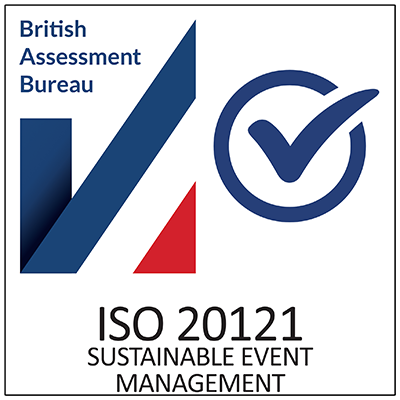Opinion
Why innovation needs emotion to be really satisfying.
Adding value to audiences should supersede getting wooed by the newest shiny tech, says Grant Ireland, Head of Digital at Stagestruck.
Each month brings with it a new shiny piece of innovation set to disrupt the global events industry. But sometimes there’s a risk of getting sucked into the hype at the expense of genuine added value for audiences. So, what’s a better approach?
When the iPad first launched in 2010, everyone wanted a piece of the action at their next event. They wanted presentations distributed to each attendee, real-time feedback surveys and interactive Q&As all shared via a 9.7-inch touchscreen. Much the same happened when VR first made its way into the industry, with companies shelling out huge sums on immersive experiences. And then came virtual presenters, speakers broadcast onto stages as hi-tech holograms.
The right technology, used in the right way, can help deliver exceptional outcomes. But it has to make people feel something. The trouble was, in each case, organisations didn’t necessarily know how or why they wanted to use the technology. Everybody else was doing it, so they wanted to as well. The consequence was audiences staring down at screens rather than connecting with one another, lacklustre VR experiences that fell flat, and great speakers who missed the chance to truly engage in the moment.
In other words, there was a tonne of enthusiasm for integrating the latest tech but often without asking the fundamental question: how will this make the experience more meaningful? Not just smoother, flashier or more efficient, but more powerful, more moving, more memorable. Innovation without emotion doesn’t last — and it’s the emotional dimension that turns fleeting novelty into lasting impact.

Innovation without emotion doesn’t last.
At Stagestruck, we’re passionate about innovation and we’re always exploring how it can elevate the experiences we deliver. The right technology, when guided by purpose and empathy, can genuinely transform an event. It can help brands transcend distance and bring together a global audience. It can automate the ordinary to free up space for the extraordinary. And it can absolutely add that wow factor — but only when the wow means something to the people in the room.
Yes, let’s push boundaries. But let’s make sure the boundaries we’re pushing take us somewhere deeper. Closer to what makes us human. The storytelling. The spectacle. The spontaneous laughter. The spark of inspiration. The thrill of being seen, understood, or moved to take action. The best experiences don’t just impress — they move people.

The best experiences don’t just impress — they move people.
Audiences won’t thank you for investing in the latest shiny thing unless it delivers something they actually care about. And increasingly, audiences are tuning out when experiences feel hollow or overloaded with tech for the sake of it. That’s why we’re seeing more interest in unplugged events and digital detox zones. People are craving realness. They want freedom from screens, but more than that, they want to feel something real. People are craving realness — not just interaction, but connection.

People are craving realness — not just interaction, but connection.
That’s why we always start with the question: how will this technology enhance the feeling of the experience? What do we want people to take away, not just intellectually but emotionally? We start by asking: what do we want people to feel? That question unlocks everything else — from format and content to platform and production.



We start by asking: what do we want people to feel?
We work with clients to clarify the story and the emotional journey from the outset. What insight should land in their hearts, not just their heads? Only once we’ve established that do we explore how innovation might help bring it to life.
Take polling and engagement apps. Too often, they’re dropped into agendas without intent, populating the room with lightweight questions and no real payoff. But used with care, they can provoke conversation, spark reflection and make the audience feel heard. And sometimes, they’re simply not needed because not everything needs an app to be meaningful.
It’s the same with VR. There are real technical and emotional risks. Poorly executed, it can feel clunky, awkward and isolating. But thoughtfully deployed, it can be powerful. When we supported a major automotive brand to launch a new vehicle, we used VR not for novelty but for necessity, offering an emotionally rich orientation experience to 4,500 people in multiple languages and giving them a sense of control and personal discovery.
We rarely use off-the-shelf solutions. Instead, we adapt, reshape and reimagine to make sure the technology earns its place. Technology earns its place when it helps tell a more powerful story.

Technology earns its place when it helps tell a more powerful story.
For one global client, we used Microsoft’s HoloLens to bridge 5,000 miles of physical distance, enabling their CEO to walk a live audience through a product that couldn’t be physically transported. The result wasn’t just logistical, it was emotional. The sense of presence, immediacy and immersion sparked curiosity and connection.
These kinds of experiences stay with people not because of the gadgetry, but because they stirred something inside.
The industry needs a subtle but important shift. We need to be as obsessed with emotional value as we are with innovation. We need to ask: what’s the emotional payoff? Does this elevate the story we’re telling? Does it move the audience, or just impress them?
Because innovation without emotion doesn’t last. And the best experiences always do.










